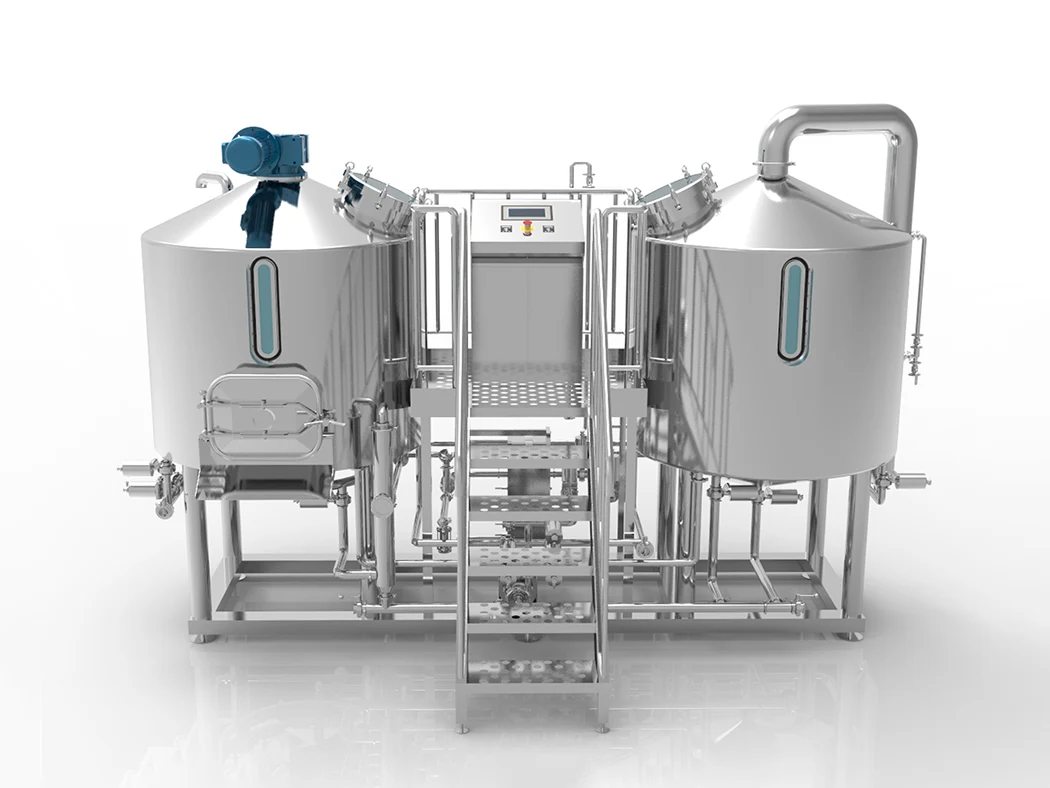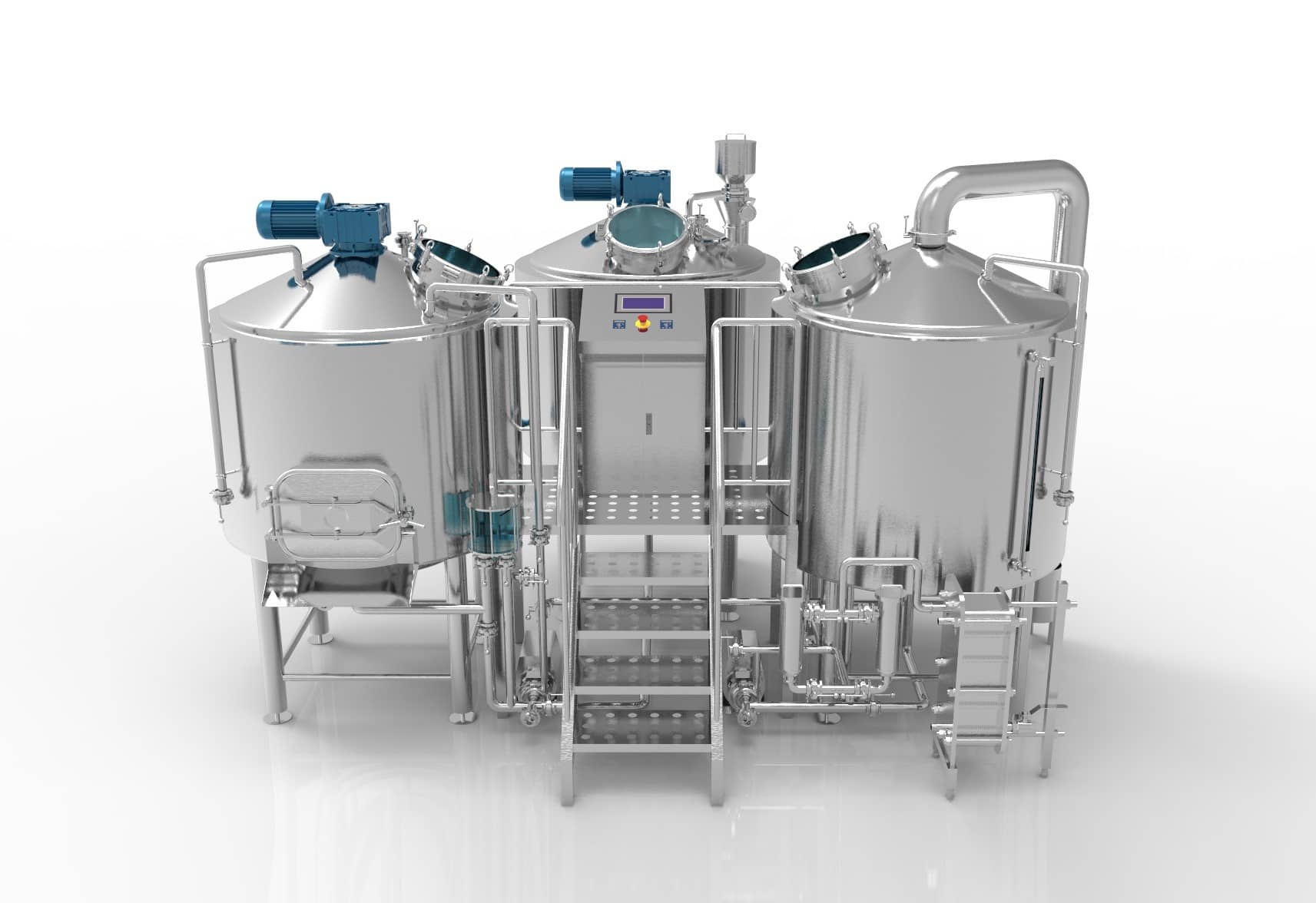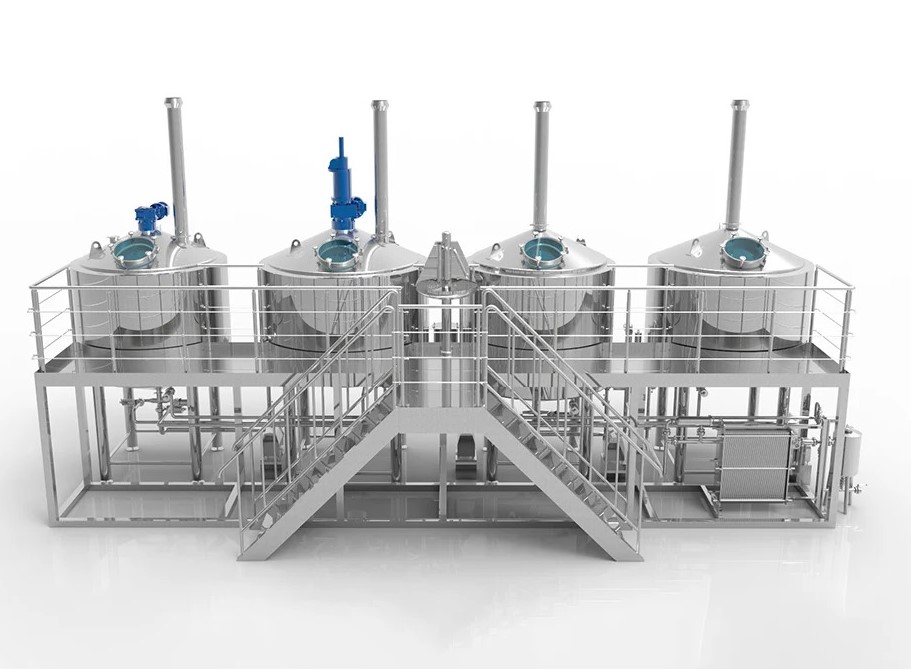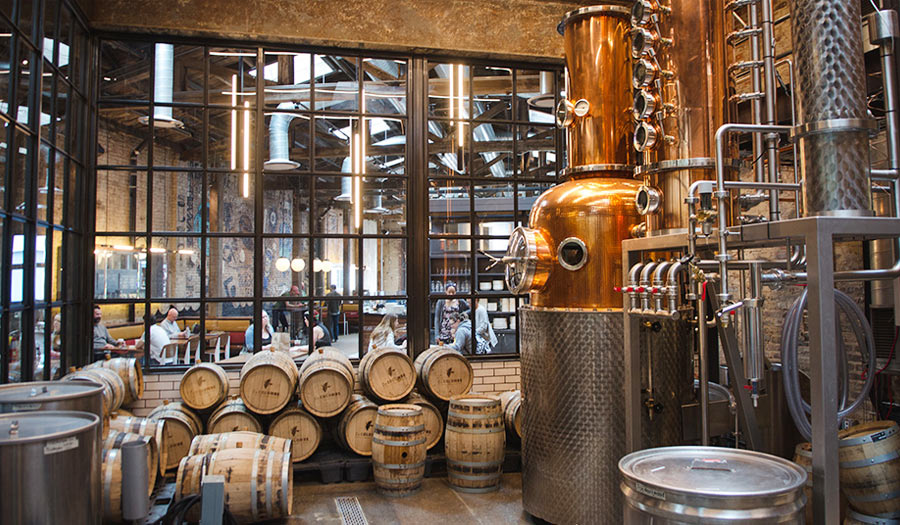Many brewers and craft producers struggle to scale their operations due to outdated equipment, limited production flexibility, or the lack of a reliable supplier. Without the right tools, even high-quality recipes can fail to meet market expectations.
Beer distillery equipment includes the brewing and distilling machinery used to produce beer, whiskey, and other craft beverages. This encompasses brewing systems, fermenters, stills, mash tuns, and temperature control units designed for small batch and commercial production.
What Is Beer Distillery Equipment?
Beer distillery equipment refers to the integrated machinery used in the brewing and distilling of beer and spirits. This includes a wide range of components, from mash tuns and fermenters to pot stills, kettles, and control systems that allow precise temperature and fluid flow regulation. Whether for a brewery, microbrewery, or a hybrid beer and distilling setup, having the right equipment is vital for producing quality beer or spirits like whiskey.
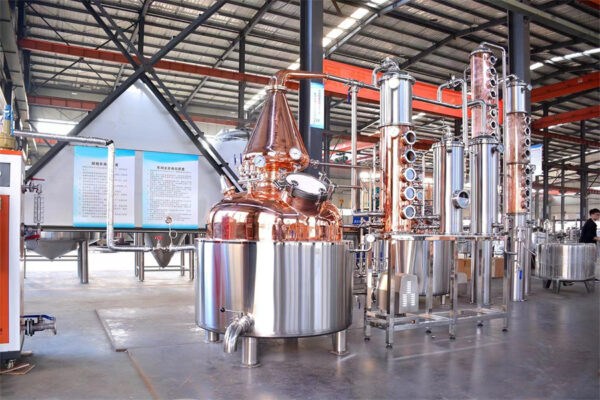
The most commonly used brewing equipment in distilleries includes:
-
Stainless steel brewing systems
-
Mash tuns and lauter tuns
-
Fermentation tanks
-
Pot stills and reflux stills
-
Kettles and heating sources
-
Cooling and chiller units
-
Sanitary valves and filtration systems
-
Brite tanks for carbonation and finishing
A modern distillery must ensure hygiene, process automation, and energy efficiency. That’s why many professional setups prefer 304 stainless steel construction—easy to clean, corrosion-resistant, and compliant with food-grade standards. High-end beer brewing equipment is often designed to serve dual purposes, supporting both craft brewing and distillation processes with flexibility.
What Are the Core Components of a Modern Brewing System?
A complete brewing system is made up of several major components that function together to turn grain into beer. For distilleries that also produce spirits, this system often doubles as the first stage of the distillation process.
| Component | Function |
|---|---|
| Mash Tun | Converts malt and water into fermentable sugars (mash) |
| Kettle | Boils wort and adds hops or other flavoring ingredients |
| Fermenter | Hosts yeast activity to convert sugars into alcohol |
| Heat Exchanger | Rapidly cools wort before fermentation begins |
| Glycol Chiller | Maintains low temperatures during fermentation |
| Control Panel | Regulates temperature, pump flow, and batch timers |
This setup is often referred to as a brewhouse, and is central to the operation of any brewery or craft distillery. It’s not just the tank count that matters—efficiency, heat transfer speed, and the ability to integrate with distilling equipment are essential for long-term scalability.
For those focused on producing both beer and spirits, additional components like stills, distillation columns, and filtration units are integrated into the design to transition from brewing to distilling without loss in product quality or yield.
How Does Distilling Equipment Work in a Brewery Setting?
In hybrid operations, distilling equipment complements the brewing system by enabling the conversion of fermented beer into distilled spirits. This crossover setup is increasingly popular among craft breweries and small batch distilleries that want to expand their product lines.
The most common types of distilling equipment used are:
-
Pot stills – great for flavorful spirits like whiskey or rum
-
Column stills – used for cleaner spirits like vodka
-
Reflux stills – allow controlled separation of alcohol and vapor purity
-
Air Still Pro – suitable for smaller, entry-level production
-
Distillation kits – modular systems used for testing or home distilling
In a brewery that also engages in distillation, yeast from the fermentation stage remains active in the mash, which is then transferred to a still. The distiller carefully controls the heating process, enabling alcohol to vaporize and pass through the column, where it is condensed and collected as distillate.
This system allows for:
-
Efficient use of brewing and distilling assets
-
Full flavor control in small batch spirits
-
Better ROI by reusing fermentation infrastructure
-
The production of whiskey, moonshine, or other custom spirits
What’s the Difference Between Brewing and Distilling?
Though both processes involve transforming raw ingredients into alcohol, brewing and distilling are fundamentally different in purpose, method, and output. Understanding this distinction is essential for anyone operating a hybrid facility.
Brewing
-
Converts sugars from malt into alcohol via fermentation
-
Results in beverages like beer, which are lower in alcohol (typically 4–8%)
-
Uses equipment such as mash tuns, fermenters, kettles, and chillers
-
Requires precise yeast management, temperature control, and sanitation
Distilling
-
Takes fermented liquid (known as “wash” or “beer”) and separates alcohol via heat and condensation
-
Results in higher-proof spirits like whiskey, vodka, or moonshine
-
Relies on stills, reflux columns, and condensers
-
Often involves aging (e.g., in oak barrels) for flavor development
While brewing is about crafting balance in ingredients, distilling is about refining purity and strength. Many modern facilities perform both tasks using modular systems that allow switching between production modes.
What Materials Are Best for Beer Distillery Equipment?
Material selection plays a key role in both hygiene and performance. The two most common materials used in professional brewing and distilling systems are stainless steel and copper.
| Material | Benefits | Applications |
|---|---|---|
| Stainless Steel | Durable, sanitary, corrosion-resistant | Brewing tanks, fermenters, chillers |
| Copper | Excellent heat conductivity, removes sulfur | Stills, vapor paths, condensers |
| Glass/Plastic | Rare in pro use; used in home distilling | Entry-level kits, testing setups |
Most modern stainless steel brewing equipment is made from 304 stainless steel, which provides the ideal balance between strength, corrosion resistance, and food-grade certification. In distillation, copper stills are often used in combination with stainless tanks to harness the best of both materials.
For facilities prioritizing low maintenance, compliance, and scalability, full stainless steel systems are typically the preferred long-term investment.
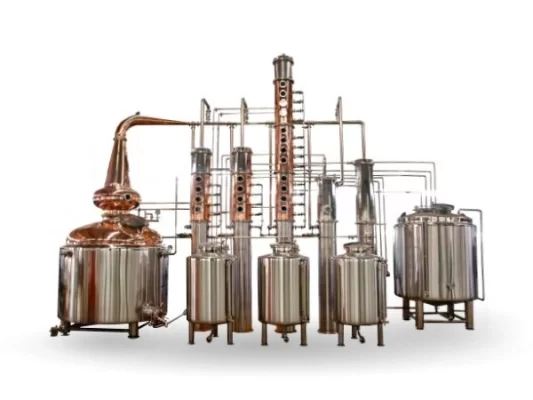
How to Choose the Right Equipment for Your Brewery or Distillery
Selecting the right equipment involves much more than picking tank sizes or still types. A successful investment considers production goals, space constraints, spirit variety, and local regulatory requirements.
Let’s walk through a sample scenario:
A small urban brewery producing 10 bbl batches wants to introduce a craft whiskey line. They install a 150-gallon copper pot still with a 3-plate reflux column, sharing glycol chilling and a control panel with the existing brewhouse. This integration saves 30% on installation costs and allows flexible switching between beer brewing and distilling without expanding their footprint.
Key considerations for selection:
-
Volume per batch: 100, 150, 300, or 500 gallons
-
Type of spirit: Whiskey needs pot stills; vodka prefers reflux columns
-
Heating method: Electric, steam, or gas-fired
-
Automation: Manual vs. semi-automatic vs. PLC touchscreen
-
Cleaning: Whether you require CIP-ready tanks and sanitary valve systems
By partnering with an experienced supplier who understands craft brewing equipment and distillation systems, you avoid costly redesigns and gain support for certifications, layout planning, and future upgrades.
What Are the Benefits of Stainless Steel in Brewing and Distilling?
Stainless steel is the material of choice for modern brewing and distilling equipment due to its strength, sanitation, and performance across a wide range of temperatures and processes.
Why stainless steel is essential:
-
Hygienic: Its non-porous surface resists microbial buildup, making cleaning simple and effective.
-
Durable: Withstands repeated heating and cooling cycles without warping or cracking.
-
Compliant: Meets sanitary standards for food and beverage processing.
-
Corrosion-resistant: Suitable for acidic environments created during fermentation and distillation.
Most beer brewing equipment and distilling equipment is made from 304 stainless steel, which offers an ideal balance of cost, corrosion resistance, and weldability. For higher resistance or corrosive applications, some systems use 316 stainless steel—though this is more common in pharmaceutical-grade systems.
Importantly, stainless steel tanks, kettles, and piping systems support integration with CIP (Clean-in-Place) and sanitary valve networks, reducing manual labor while improving consistency in both brewing and distilling environments.
What Role Does Fermentation Play in Distilling Beer into Spirits?
Before any liquid can be distilled, it must first be fermented. The fermentation process is where sugars from malted grain are converted into alcohol by yeast, forming the base liquid—commonly called “beer” or “wash”—that is later sent to the still.
Fermentation Overview:
-
Mashing converts starches into fermentable sugars
-
The wort is cooled and transferred into a fermenter
-
Yeast is pitched and begins converting sugar into ethanol and CO₂
-
After several days, fermentation produces a liquid with 6–10% alcohol
-
This liquid is then heated in a pot still or column still for distillation
In a brewing-only operation, the product is filtered and carbonated. In distillation, it is further processed to extract and purify alcohol. Temperature control, yeast strain selection, and fermentation duration all impact the final distillate’s flavor, yield, and alcohol content.
Fermentation is not only the bridge between brewing and distilling—it defines the base character of your spirits. A poorly managed fermentation stage results in weak or flawed spirits, no matter how advanced your distillation system is.
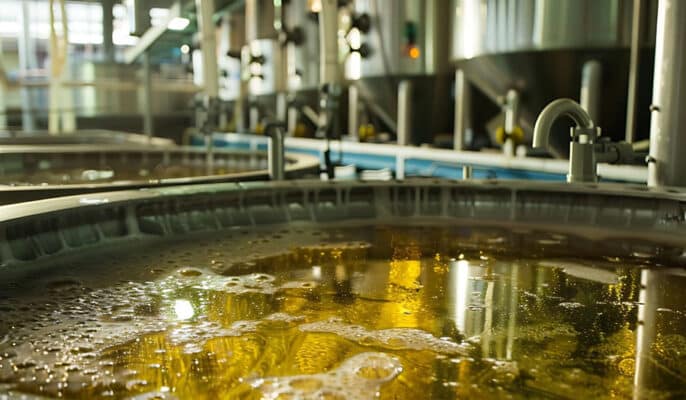
How Do Craft Breweries Expand into Distilling?
Many craft breweries seek to expand their portfolio by adding spirits like whiskey, vodka, or gin to their offerings. This transition typically involves installing additional distilling equipment and reconfiguring part of the brewhouse for dual use.
Instead of rebuilding from scratch, brewers often upgrade their current systems with:
-
Modular pot stills with shared steam or electric heating
-
Reflux columns to produce high-proof spirits
-
Separate fermenters for wash vs. beer
-
A dedicated filtration and cooling line for distilled products
-
Regulatory consulting for spirit licensing and compliance
Case example:
A 5,000L brewery uses a 300-gallon still with a reflux column and integrates it with their existing glycol chilling loop. They allocate three fermenters for beer and one for wash. The spirits are branded under a sub-label, attracting a new customer segment and increasing profit margins.
With the right brewing and distilling equipment, breweries can test the spirits market with minimal disruption. The demand for craft beverage diversity continues to grow, and hybrid breweries can meet that demand efficiently.
What Makes a Good Brewing and Distilling Equipment Supplier?
Choosing the right equipment manufacturer or supplier can make or break your business. Beyond just hardware, you’re buying experience, customization options, and long-term support.
Key qualities to look for:
-
Turnkey solutions: From brewhouse layout to installation and training
-
Customization: Ability to tailor vessels, valve systems, and automation
-
Global certifications: CE, UL, 3A compliance, etc.
-
Post-sale support: Access to spare parts, upgrades, and remote diagnostics
-
Experience: Proven delivery to breweries and craft distilleries globally
Micet specializes in providing custom solutions for startups, growing producers, and established operations alike. Whether you need new and used equipment, a dual-purpose system, or a full commercial brewing and distilling plant, we help design and deliver reliable, certified systems that scale with your needs.
Frequently Asked Questions
What is the difference between beer brewing and distilling spirits?
Brewing converts sugars into alcohol through fermentation to produce beer, while distilling involves heating fermented liquid to separate and purify alcohol for higher-proof beverages like whiskey or vodka.
What size of still should I use for small batch distilling?
For small batch production, 150-gallon pot stills or column stills are ideal. They balance output with flavor control and integrate well into microbrewery or hybrid brewing systems.
Can I use the same equipment for brewing and distilling?
Yes, many components such as mash tuns, fermenters, and kettles can be shared. Additional distilling equipment like stills and reflux columns are added for spirit production.
What material is best for distilling equipment?
Stainless steel is ideal for durability and hygiene, while copper is often used in stills to improve spirit aroma and remove sulfur compounds from vapor.
How important is glycol chilling in the process?
Glycol systems help maintain precise temperatures during fermentation and are critical for controlling yeast activity and post-boil cooling.
What is the role of a heat exchanger in brewing?
A heat exchanger rapidly cools wort after boiling, preparing it for fermentation. It’s essential for minimizing bacterial contamination and protecting yeast viability.
Key Takeaways
-
Beer distillery equipment includes brewing systems, stills, fermenters, filtration, and chilling components.
-
Understanding the difference between brewing and distilling helps design an efficient dual-purpose facility.
-
Stainless steel offers durability, hygiene, and compliance for both beer and spirit production.
-
Fermentation is the critical link between brewing and distilling; its management defines product quality.
-
Partnering with the right supplier ensures scalable, regulatory-compliant, and long-lasting systems.
Final Thought
Whether you’re a craft brewer looking to add small batch spirits, a distillery scaling into beer production, or a new venture seeking reliable brewing and distilling equipment, your choice of system impacts everything from flavor to compliance.
Micet provides global clients with high-quality, customizable brewing and distillation systems, built with precision craftsmanship and supported by technical expertise. Let us help you design a beer and distillery equipment solution that grows with your ambition.

